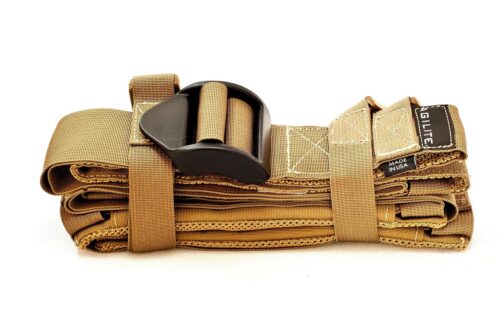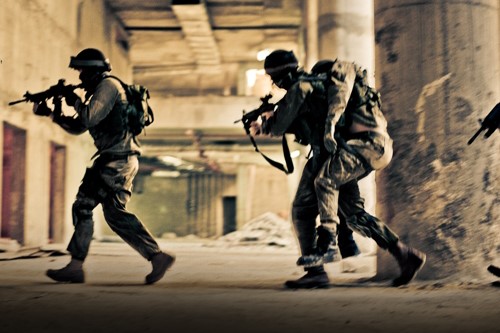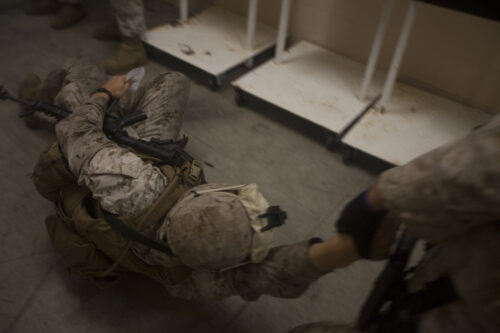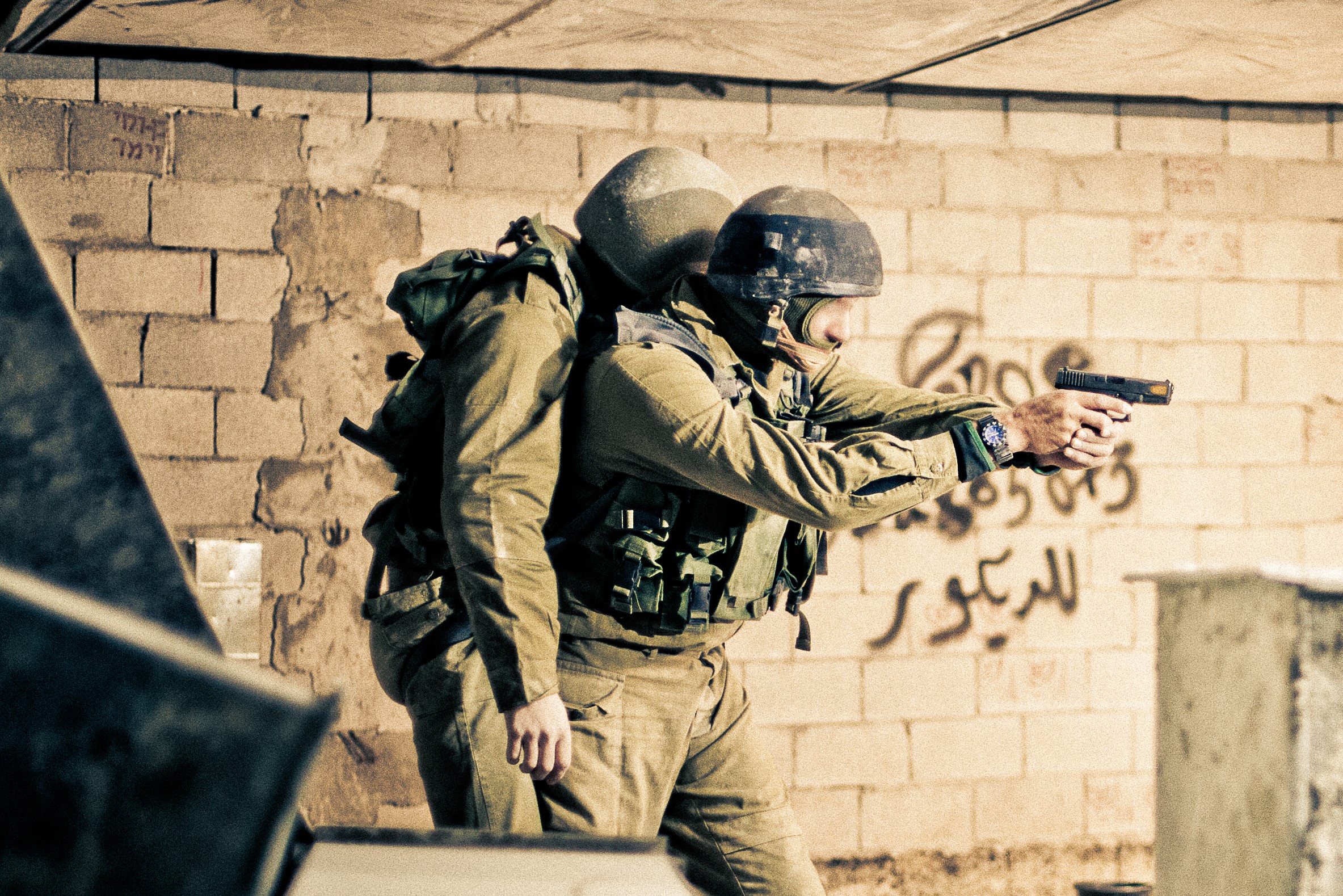September is National Preparedness Month. The National Preparedness Month theme for 2020 is “Disasters Don’t Wait. Make Your Plan Today.” In keeping with that theme, we will take a look at an innovative product developed for casualty evacuation (CASEVAC).
The Agilite Injured Personnel Carrier (IPC) was developed to replace the fireman’s carry and allow military personnel to carry an injured individual in the most efficient way — back pack style. It allows the wearer to evacuate a casualty over long distance while keep in their hands completely free to operate a weapon, navigate difficult terrain or negotiate obstacles.
Agilite is a leading manufacturer of tactical gear headquartered in Israel. Agilite is a joint venture between several Israeli and US Army Special Forces veterans. The company produces a wide range of cutting-edge tactical gear. Agilite gear is designed, battle-perfected and manufactured in Israel
The IPC was designed in conjunction with the Israeli Army Special Forces. As of this writing, the IPC is being used by top-tier military and law enforcement units in over 20 countries, as well as by search and rescue teams in the US, Canada and Asia.

US Marine Corps Special Operations Command (MARSOC) and 1st Reconnaissance Battalion were among the first to procure the IPC in the US. The Marines heard about the product from several US Air Force pararescuemen. It’s also used by the US Army 101st Airborne Division, as well as the British SAS. It has also been adopted by the Australian Defense Forces, as well as Israeli Army and Navy commando units.
The IPC is employed by many SWAT teams including the YAMAM, Israel’s Tier 1 counter terrorism unit. Part of the Israel Border Police, the YAMAM specializes in hostage rescue and offensive raids against hostile targets in civilian areas.
According to Elie Isaacson, an Israeli Special Forces veteran who serves as Director of Strategic Development at Agilite, it was actually a meeting with a SWAT team in San Antonio a that lead Agilite to complete production of the IPC. When the team saw the IPC they asked us what it was. When Agilte told them, they absolutely loved the concept and Agilite brought forward its launch.
The IPC is also giving new found mobility to the disabled. Isaacson states “When our IPC was being bought by individuals across the world we weren’t entirely sure why. We put out an email to our customers asking why they’d bought it and we were astounded by the results. From quadriplegics to a Danish teenager using it to carry his epileptic friend when he suffers an attack, we realized that in many cases it was civilian care-givers buying it to make disabled people’s lives easier.”
The IPC is also being used to enable disabled persons to enjoy greater levels of activities in the outdoors. It’s being used to take disabled children hiking for the first time. It also allows others the ability to be taken up and down stairs and into swimming pools more easily. Isaacson recounts that he received an email from Dieter Marzinger, a quadraplegic C4/5 from South Africa, who described the experience of being safely underwater in a pool again as a feeling of “zero gravity.”
“We designed it to save lives in life or death situations but were delighted to find out that it can improve disabled peoples’ quality of life too.” adds Isaacson. The IPC also provides the capability of evacuating senior citizens from a fire in a nursing home or hospital when elevators are not in use.

Although the primary focus of Agilite is the military, law enforcement and rescue markets, the company “…would be honored and delighted to custom-adapt or custom design mobility equipment specifically for disabled people.” according to Isaacson.
Issacson states that US Navy SEAL Greg Holihan took the IPC down to his local high school with a friend to test its effectiveness. They took turns carrying each other for 440-yard (402 m) stints totaling one mile (1.6 km). According to Hollihan “Not only did the device work perfectly for carrying an injured person, it also makes an excellent piece of exercise equipment.” Holihan thinks Agilite should consider marketing the IPC for CrossFit, as well.
The IPC has its roots in an improvised field carry technique employed by the Israel Defense Forces in which four rifle slings are connected to allow soldiers to carry injured soldiers like a backpack. It’s similar to the pistol-belt carry technique taught to US military recruits.
The pistol-belt carry technique employs a sling made by joining two fully extended pistol belts (or any material the will not break or cut the casualty, such as rifle slings, litter straps or muslin bandages tied together, etc.) into a single large loop.
Both techniques are designed to allow a soldier to carry a casualty over longer distances while keeping both hands free. They are more comfortable and effective means of carry than the traditional fireman’s carry, in which the carried person is essentially draped across the shoulders of the carrier.
The Israeli Army wanted a better, purpose-built hands-free method of evacuating a wounded soldier to replace the fireman’s carry and allow soldiers to keep both hands on their weapon. As Lt. Col.(Ret) Dr Eric Setton, former Head of Medevac for 669, the Israeli Air Force’s elite search & rescue unit, states “Anyone who’s ever carried or been carried in a fireman’s carry knows it’s incredibly uncomfortable and inefficient.”
Agilite took the basic sling-carry concept and improved upon it, adding padding and other features, including the ability to adjust the length, a sternum strap for added stability and a florescent indicator for orientation. The result was the IPC.

It’s a huge improvement over the rifle-sling or pistol-belt techniques. It allows you to carry much more comfortably, more securely and for longer distances. It’s so simple that it one wonders why no one ever thought of it before.
The IPC is the most comfortable means of one-man carry for both the carrier and the casualty. It’s the only method that allows you to keeps both hands free, a critical feature in any rescue scenario. To quote Lt. Col. Setton, “The IPC gives you full maneuverability, keeping the injured person securely on your back and gives you full use of both your arms and legs.”
The IPC is exceptionally well made. It’s constructed of Mil-Spec Type 8B 2″ wide high-tensile strength nylon webbing with Mil-Spec ITW Nexus polymer hardware. It has a tensile strength (static load) of 2,200 to 5,000 pounds (998 to 2,268 kg) depending on the color. Standard available colors are Black and Coyote Brown. Custom colors are available on special order.
The IPC is lightweight and compact, too, so it’s easy to pack with you. It weighs 0.77-pound (0.35 kg) and folds down accordion style to just 10 inches (25.4 cm). Unfolded it measures 12.5 feet (3.81 m) in length.
The IPC is very easy to deploy:
1) Place the casualty in a supine position with the knees raised. Place the IPC under the knees perpendicular to the body with the fluorescent indicator next to the groin.
2) Close both leg straps around the casualty’s legs and slide the IPC under the casualty’s back
3) Pull each side of the main harness around the body to create shoulder straps.
4) Take a seat between the casualty’s legs, put your arms through the shoulder straps and adjust them until they are snug like backpack straps and buckle the sternum strap.
5) Grab the casualty’s arm or writ on the injured side and roll over toward the casualty’s uninjured side until you are on all fours.
6) Slowly transfer your weight to your legs and stand up.

Of course, your first priority when under fire is to return fire. To quote the US Army on Tactical Combat Casualty Care (TCCC), “The best medicine on any battlefield is fire superiority.” As soon as you are directed or able to, keeping the casualty from sustaining additional injuries becomes your major objective. Although it should normally be avoided (as it can cause further injury), a casualty drag is the quickest way to remove a casualty from the line of fire to a position of cover.
Manual carries need to performed correctly to prevent further injury to the casualty, as well as to prevent injuring yourself. One-man and two-man manual carries are employed to move a casualty when it isn’t possible to make a litter and/or you don’t have any others to assist you in moving the casualty.
A casualty shouldn’t generally be moved prior to emergency care unless it’s necessary to extricate the casualty and yourself from a dangerous situation. While two-man manual carry is preferred, it often isn’t possible.
Agilite also offers an IPC Pouch to store the IPC. The IPC Pouch is lightweight pouch made of 500 Denier Mil-Spec nylon that’s designed to keep your IPC together, compact and protected. The IPC Pouch is 10 Inches (25.4 cm) long and features a rear belt loop. It’s available in Black and Coyote Brown.
Summing Up.
The Agilite IPC is the only single person evacuation method that keeps both hands free.It’s a more comfortable and easier way to carry a person for extended periods. It’s strong, lightweight and compact. It’s not only practical for military, law enforcement and rescue personnel, but also for care-givers of disabled persons, hunters, hikers, campers and anyone who enjoys the great outdoors.
The IPC has a MSRP of $94.99. MSRP for the IPC Pouch is $13.99. All Agilite products are covered by a lifetime warranty.
Sources
Agilite www.agilitegear.com
Material Disclosure
I received this product as a courtesy from the manufacturer so I could test it and give my honest feedback. I am not bound by any written, verbal or implied contract to give this product a good review. All opinions are my own and are based off my personal experience with the product.
*The views and opinions expressed on this website are solely those of the original authors and contributors. These views and opinions do not necessarily represent those of Spotter Up Magazine, the administrative staff, and/or any/all contributors to this site.

